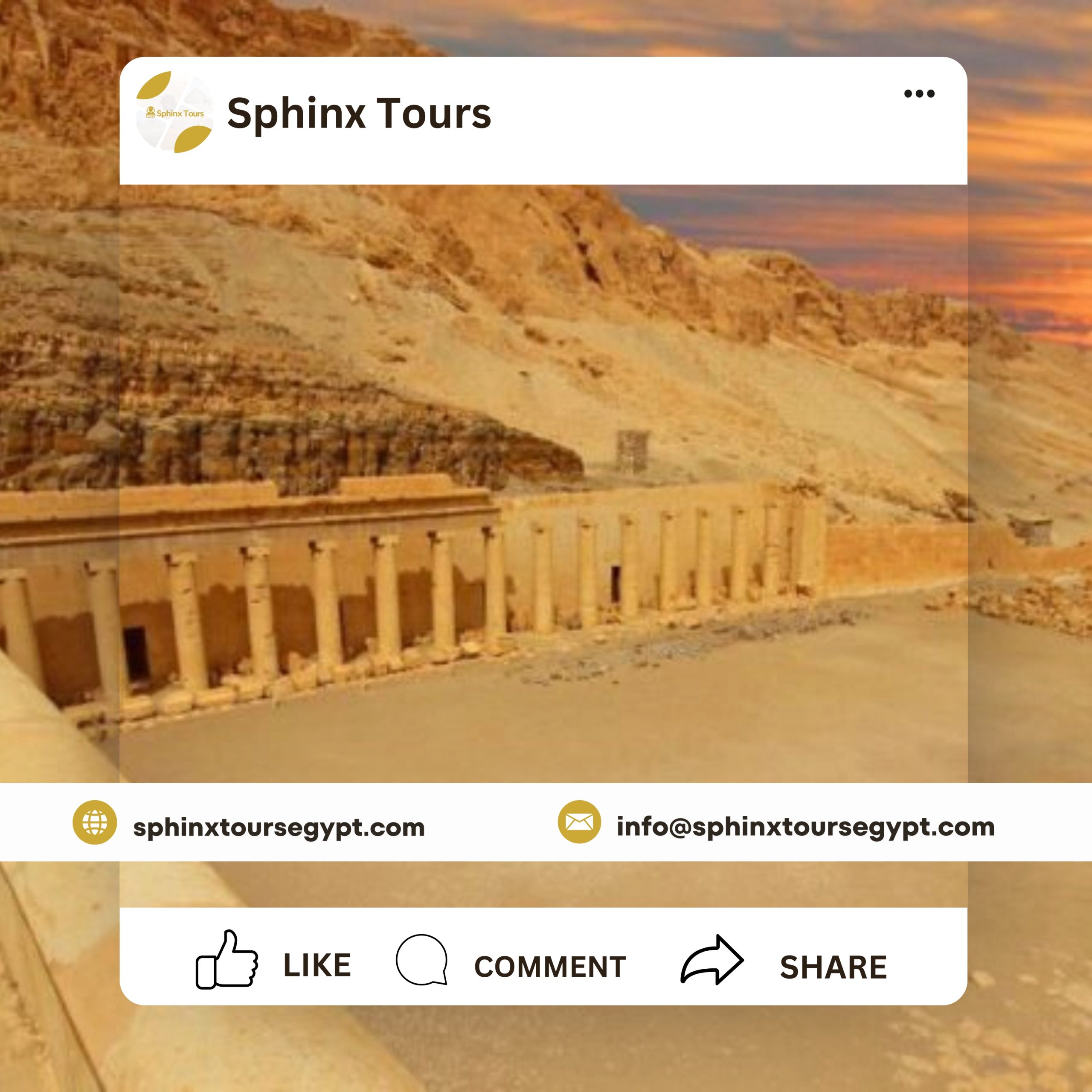Valley of the Queens in Luxor
The Valley of the Queens is the burial place of the queens of ancient Egypt. It was known in ancient times as “Ta-Set-Neferu”, meaning: “Place of the sons of the pharaoh” or “Place of beauty”; because in this place the queens of the eighteenth, nineteenth and twentieth dynasties (from 1550 to 1070 BC) were buried, in addition to many princes, princesses and a number of nobles. The graves of these individuals were maintained by priests who performed daily funeral rites and prayers for the dead nobles.
The valley is located near the famous Valley of the Kings, on the west bank of the Nile River in Luxor Governorate.
The reason for choosing this site as a burial site is not precisely known, and the site’s proximity to the workers’ village in Deir el-Medina and the Valley of the Kings may have been a factor in this choice, and another consideration is the presence of a sacred cave dedicated to Hathor at the entrance to the valley, and this cave may be associated with the rejuvenation of the dead or their rebirth in the afterlife.
Although the valley was a major burial site for queens, princes and some nobles during the 18th and 19th Dynasties, it ceased to be a royal burial site after the close of the 20th Dynasty. Many of the tombs were extensively reused, and many were modified to accommodate multiple burials. In some cases, this involved digging burial pits into existing tombs. Little is known about the use of the Valley of the Queens during the Ptolemaic period. During the Roman period, we see extensive use of the valley as a burial site again. During the Coptic period, some of these tombs were built to house hermits and monks. Tombs such as QV60 (Nabtetawy) and QV73 (Henuttawy) show signs of a Coptic Christian presence. Wall scenes representing the deceased and Egyptian gods were covered with layers of plaster and sometimes inscribed or painted with red ink, with Christian symbols. The Christian presence in these tombs continued until the 7th century AD.
Nefertari No. 66 in the Valley of the Queens on the West Bank, which belongs to the wife of King Ramses II, Nefertari, who said in his love for her (she is the one for whom the sun rises), and which despite the passage of thousands of years since its discovery in 1904 by the Italian mission led by the scientist Acchiparelli, retains the colors and engravings at the peak of precision and magnificence, as these engravings cover more than 520 meters of the tomb to dazzle all the guests of the world during their visit. The tomb consists of 7 rooms and a long corridor. From the main room there is a corridor that ends in a rectangular room. At the end of the first room, there is a staircase leading to the coffin room consisting of four pillars and three small rooms in the middle of the hall. He stressed that the tomb was discovered in 1904, and was not opened to the public until the early 1990s, due to some damage to the inscriptions and decorations, due to salt deposition.
How many tombs are there in the Valley of the Queens?
The Valley of the Kings is divided into the Eastern and Western Valleys. The Eastern Valley is the most famous of the two, while the Western Valley contains a small number of tombs. In total, the Valley of the Kings contains more than sixty tombs, in addition to twenty unfinished tombs that are no more than pits.
One of the most famous tombs in the Valley of the Queens ?
The tombs of Thutmose III, Thutmose IV, Amenhotep II, King Ay, Horemheb, Ramesses I, Ramesses II, Ramesses IV, Ramesses VI, Ramesses IX, Seti I, Seti II, and Merneptah are considered among the most prominent burial chambers in the Valley of the Kings.


0 Comment